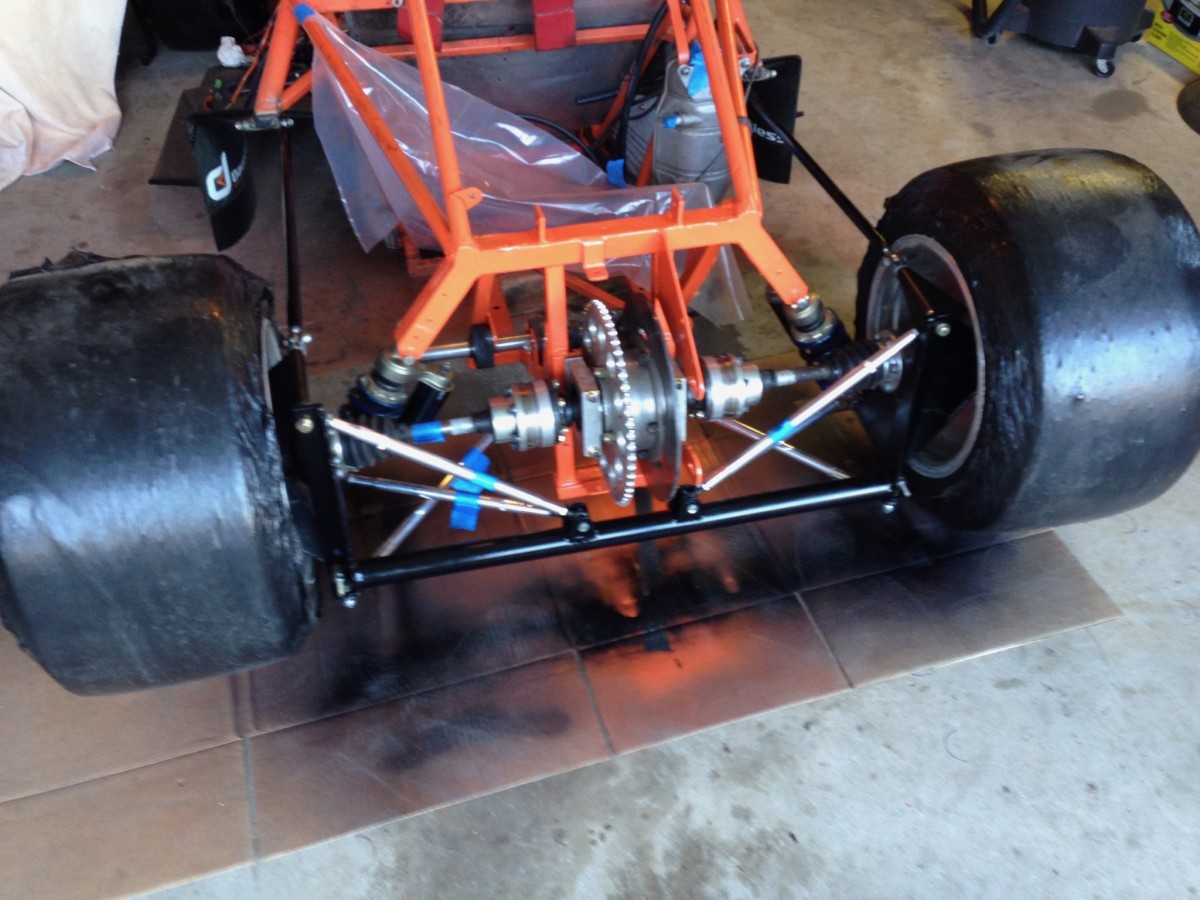As said, a DeDion implemented with a space frame can be far lighter than a huge tube stressed entirely in bending.
Could also be done as a stressed skin torque box (essentially a monocoque structure), but it is far more difficult to package,
since the diff will be enclosed within it, and you must have openings for things like the driveshaft, axles, etc.
(ISTR that Jim Hall tried something like that on one of the later Chapparals)
Think of a Classical DeDion as two vertical links with hubs that carry the wheels, rigidly connected by a stiff beam.
Even if there is built in pre-set camber or toe, the rigid beam is responsible for all wheel location and control, just like a live axle.
But lets think a moment about what is really required, and what we might do differently to achieve the same goal:
1) Camber control; just like a live axle, each tire should be equal, if one side changes the other side does too by same amount.
2) Toe control; just like a live axle, each tire should be equal, if one side changes the other side does too by same amount.
3) Caster control ... caster control ... caster control ... hmmm, maybe not.
What if our rigid 'beam' was stiff in the horizontal plane to control toe, and stiff in the vertical plane to control camber,
but was torsionally flexible?
For 'caster' control, could use a 4 link setup, a link connected from the chassis to the top and bottom of each 'vertical link'.
That would handle suspension fore/aft location, as well as tire forces reacting from braking and acceleration.
When the wheels are at different heights, ie one wheel is compressed, the other wheel is extended, the two 'castor' angles will differ.
But the 'beam' is torsionally flexible enough to twist and accommodate the few degrees needed, remaining stiff for toe and camber control.
What does that change buy us?
Such a flexible beam could be formed as a 'U' channel, or a 'T' or 'L' section, or even a light spaceframe having triangulation
in only 2 of the three dimensions, designed for limited torsional compliance.
All three of those structures could be very light in weight, yet open enough to enable packaging with access to the diff, driveshaft, and axles.
"But what about lateral location of the DeDion assembly, how can such a configuration handle side loading from cornering?"
One method is a Watts linkage, but employing a chassis mounted bell crank rather than a suspension mounted one. (reduces unsprung weight!)
The side links from the bell crank, rather than attaching to the chassis, would attach to the 'vertical links' instead.
For additional packaging flexibility, the bellcrank could be laid flat on top of or underneath the diff, rather than standing up.
Such a setup could combine the light weight and low unsprung weight of an IRS, with the effective tire location and minimal camber
of a live axle, in a relatively simple and straightforward configuration.
If cleverly implemented, it would offer easy pre-set adjustment of camber and toe (as I believe the autocross car setup shows).
I call this concept the 'Floppy D'.











 One place where solid axles rule the day (and night).
One place where solid axles rule the day (and night).



























